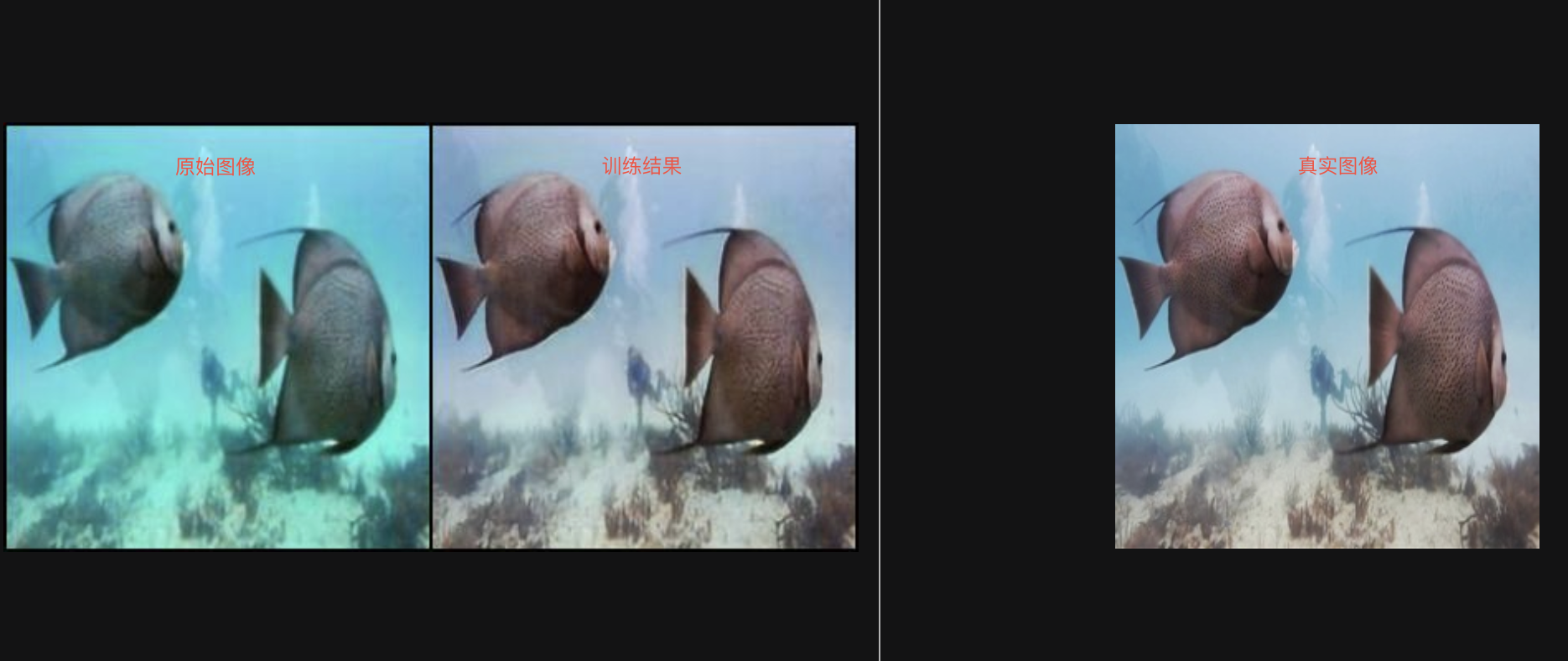taskflow/taskflow: A General-purpose Parallel and Heterogeneous Task Programming System (github.com)
ChunelFeng/CGraph: 【A simple C++ DAG framework】 一个简单好用的、无三方依赖的、跨平台的、收录于awesome-cpp的、基于流图的并行计算框架。欢迎star & fork (github.com)
Taskflow 


Taskflow helps you quickly write parallel and heterogeneous task programs in modern C++
Why Taskflow?
Taskflow is faster, more expressive, and easier for drop-in integration than many of existing task programming frameworks in handling complex parallel workloads.

Taskflow lets you quickly implement task decomposition strategies that incorporate both regular and irregular compute patterns, together with an efficient work-stealing scheduler to optimize your multithreaded performance.
| Static Tasking | Dynamic Tasking |
|---|---|
 |
 |
Taskflow supports conditional tasking for you to make rapid control-flow decisions across dependent tasks to implement cycles and conditions that were otherwise difficult to do with existing tools.
| Conditional Tasking |
|---|
 |
Taskflow is composable. You can create large parallel graphs through composition of modular and reusable blocks that are easier to optimize at an individual scope.
| Taskflow Composition |
|---|
 |
Taskflow supports heterogeneous tasking for you to accelerate a wide range of scientific computing applications by harnessing the power of CPU-GPU collaborative computing.
| Concurrent CPU-GPU Tasking |
|---|
 |
Taskflow provides visualization and tooling needed for profiling Taskflow programs.
| Taskflow Profiler |
|---|
 |
We are committed to support trustworthy developments for both academic and industrial research projects in parallel computing. Check out Who is Using Taskflow and what our users say:
- "Taskflow is the cleanest Task API I've ever seen." Damien Hocking @Corelium Inc
- "Taskflow has a very simple and elegant tasking interface. The performance also scales very well." Glen Fraser
- "Taskflow lets me handle parallel processing in a smart way." Hayabusa @Learning
- "Taskflow improves the throughput of our graph engine in just a few hours of coding." Jean-Michaël @KDAB
- "Best poster award for open-source parallel programming library." Cpp Conference 2018
- "Second Prize of Open-source Software Competition." ACM Multimedia Conference 2019
See a quick presentation and visit the documentation to learn more about Taskflow. Technical details can be referred to our IEEE TPDS paper.
Start Your First Taskflow Program
The following program (simple.cpp) creates four tasks A, B, C, and D, where A runs before B and C, and D runs after B and C. When A finishes, B and C can run in parallel.
#include <taskflow/taskflow.hpp> // Taskflow is header-onlyint main(){tf::Executor executor;tf::Taskflow taskflow;auto [A, B, C, D] = taskflow.emplace( // create four tasks[] () { std::cout << "TaskA\n"; },[] () { std::cout << "TaskB\n"; },[] () { std::cout << "TaskC\n"; },[] () { std::cout << "TaskD\n"; } ); A.precede(B, C); // A runs before B and CD.succeed(B, C); // D runs after B and Cexecutor.run(taskflow).wait(); return 0;
}
Taskflow is header-only and there is no wrangle with installation. To compile the program, clone the Taskflow project and tell the compiler to include the headers.
~$ git clone https://github.com/taskflow/taskflow.git # clone it only once
~$ g++ -std=c++17 examples/simple.cpp -I. -O2 -pthread -o simple
~$ ./simple
TaskA
TaskC
TaskB
TaskD
Visualize Your First Taskflow Program
Taskflow comes with a built-in profiler, TFProf, for you to profile and visualize taskflow programs in an easy-to-use web-based interface.

# run the program with the environment variable TF_ENABLE_PROFILER enabled
~$ TF_ENABLE_PROFILER=simple.json ./simple
~$ cat simple.json
[
{"executor":"0","data":[{"worker":0,"level":0,"data":[{"span":[172,186],"name":"0_0","type":"static"},{"span":[187,189],"name":"0_1","type":"static"}]},{"worker":2,"level":0,"data":[{"span":[93,164],"name":"2_0","type":"static"},{"span":[170,179],"name":"2_1","type":"static"}]}]}
]
# paste the profiling json data to https://taskflow.github.io/tfprof/
In addition to execution diagram, you can dump the graph to a DOT format and visualize it using a number of free GraphViz tools.
// dump the taskflow graph to a DOT format through std::cout
taskflow.dump(std::cout);
Express Task Graph Parallelism
Taskflow empowers users with both static and dynamic task graph constructions to express end-to-end parallelism in a task graph that embeds in-graph control flow.
- Create a Subflow Graph
- Integrate Control Flow to a Task Graph
- Offload a Task to a GPU
- Compose Task Graphs
- Launch Asynchronous Tasks
- Execute a Taskflow
- Leverage Standard Parallel Algorithms
Create a Subflow Graph
Taskflow supports dynamic tasking for you to create a subflow graph from the execution of a task to perform dynamic parallelism. The following program spawns a task dependency graph parented at task B.
tf::Task A = taskflow.emplace([](){}).name("A");
tf::Task C = taskflow.emplace([](){}).name("C");
tf::Task D = taskflow.emplace([](){}).name("D"); tf::Task B = taskflow.emplace([] (tf::Subflow& subflow) { tf::Task B1 = subflow.emplace([](){}).name("B1"); tf::Task B2 = subflow.emplace([](){}).name("B2"); tf::Task B3 = subflow.emplace([](){}).name("B3"); B3.succeed(B1, B2); // B3 runs after B1 and B2
}).name("B");A.precede(B, C); // A runs before B and C
D.succeed(B, C); // D runs after B and C
Integrate Control Flow to a Task Graph
Taskflow supports conditional tasking for you to make rapid control-flow decisions across dependent tasks to implement cycles and conditions in an end-to-end task graph.
tf::Task init = taskflow.emplace([](){}).name("init");
tf::Task stop = taskflow.emplace([](){}).name("stop");// creates a condition task that returns a random binary
tf::Task cond = taskflow.emplace([](){ return std::rand() % 2; }
).name("cond");init.precede(cond);// creates a feedback loop {0: cond, 1: stop}
cond.precede(cond, stop);
Offload a Task to a GPU
Taskflow supports GPU tasking for you to accelerate a wide range of scientific computing applications by harnessing the power of CPU-GPU collaborative computing using CUDA.
__global__ void saxpy(size_t N, float alpha, float* dx, float* dy) {int i = blockIdx.x*blockDim.x + threadIdx.x;if (i < n) {y[i] = a*x[i] + y[i];}
}
tf::Task cudaflow = taskflow.emplace([&](tf::cudaFlow& cf) {// data copy taskstf::cudaTask h2d_x = cf.copy(dx, hx.data(), N).name("h2d_x");tf::cudaTask h2d_y = cf.copy(dy, hy.data(), N).name("h2d_y");tf::cudaTask d2h_x = cf.copy(hx.data(), dx, N).name("d2h_x");tf::cudaTask d2h_y = cf.copy(hy.data(), dy, N).name("d2h_y");// kernel task with parameters to launch the saxpy kerneltf::cudaTask saxpy = cf.kernel((N+255)/256, 256, 0, saxpy, N, 2.0f, dx, dy).name("saxpy");saxpy.succeed(h2d_x, h2d_y).precede(d2h_x, d2h_y);
}).name("cudaFlow");
Compose Task Graphs
Taskflow is composable. You can create large parallel graphs through composition of modular and reusable blocks that are easier to optimize at an individual scope.
tf::Taskflow f1, f2;// create taskflow f1 of two tasks
tf::Task f1A = f1.emplace([]() { std::cout << "Task f1A\n"; }).name("f1A");
tf::Task f1B = f1.emplace([]() { std::cout << "Task f1B\n"; }).name("f1B");// create taskflow f2 with one module task composed of f1
tf::Task f2A = f2.emplace([]() { std::cout << "Task f2A\n"; }).name("f2A");
tf::Task f2B = f2.emplace([]() { std::cout << "Task f2B\n"; }).name("f2B");
tf::Task f2C = f2.emplace([]() { std::cout << "Task f2C\n"; }).name("f2C");tf::Task f1_module_task = f2.composed_of(f1).name("module");f1_module_task.succeed(f2A, f2B).precede(f2C);
Launch Asynchronous Tasks
Taskflow supports asynchronous tasking. You can launch tasks asynchronously to dynamically explore task graph parallelism.
tf::Executor executor;// create asynchronous tasks directly from an executor
std::future<int> future = executor.async([](){ std::cout << "async task returns 1\n";return 1;
});
executor.silent_async([](){ std::cout << "async task does not return\n"; });// create asynchronous tasks with dynamic dependencies
tf::AsyncTask A = executor.silent_dependent_async([](){ printf("A\n"); });
tf::AsyncTask B = executor.silent_dependent_async([](){ printf("B\n"); }, A);
tf::AsyncTask C = executor.silent_dependent_async([](){ printf("C\n"); }, A);
tf::AsyncTask D = executor.silent_dependent_async([](){ printf("D\n"); }, B, C);executor.wait_for_all();
Execute a Taskflow
The executor provides several thread-safe methods to run a taskflow. You can run a taskflow once, multiple times, or until a stopping criteria is met. These methods are non-blocking with a tf::Future<void> return to let you query the execution status.
// runs the taskflow once
tf::Future<void> run_once = executor.run(taskflow); // wait on this run to finish
run_once.get();// run the taskflow four times
executor.run_n(taskflow, 4);// runs the taskflow five times
executor.run_until(taskflow, [counter=5](){ return --counter == 0; });// block the executor until all submitted taskflows complete
executor.wait_for_all();
Leverage Standard Parallel Algorithms
Taskflow defines algorithms for you to quickly express common parallel patterns using standard C++ syntaxes, such as parallel iterations, parallel reductions, and parallel sort.
// standard parallel CPU algorithms
tf::Task task1 = taskflow.for_each( // assign each element to 100 in parallelfirst, last, [] (auto& i) { i = 100; }
);
tf::Task task2 = taskflow.reduce( // reduce a range of items in parallelfirst, last, init, [] (auto a, auto b) { return a + b; }
);
tf::Task task3 = taskflow.sort( // sort a range of items in parallelfirst, last, [] (auto a, auto b) { return a < b; }
);// standard parallel GPU algorithms
tf::cudaTask cuda1 = cudaflow.for_each( // assign each element to 100 on GPUdfirst, dlast, [] __device__ (auto i) { i = 100; }
);
tf::cudaTask cuda2 = cudaflow.reduce( // reduce a range of items on GPUdfirst, dlast, init, [] __device__ (auto a, auto b) { return a + b; }
);
tf::cudaTask cuda3 = cudaflow.sort( // sort a range of items on GPUdfirst, dlast, [] __device__ (auto a, auto b) { return a < b; }
);
Additionally, Taskflow provides composable graph building blocks for you to efficiently implement common parallel algorithms, such as parallel pipeline.
// create a pipeline to propagate five tokens through three serial stages
tf::Pipeline pl(num_parallel_lines,tf::Pipe{tf::PipeType::SERIAL, [](tf::Pipeflow& pf) {if(pf.token() == 5) {pf.stop();}}},tf::Pipe{tf::PipeType::SERIAL, [](tf::Pipeflow& pf) {printf("stage 2: input buffer[%zu] = %d\n", pf.line(), buffer[pf.line()]);}},tf::Pipe{tf::PipeType::SERIAL, [](tf::Pipeflow& pf) {printf("stage 3: input buffer[%zu] = %d\n", pf.line(), buffer[pf.line()]);}}
);
taskflow.composed_of(pl)
executor.run(taskflow).wait();
Supported Compilers
To use Taskflow, you only need a compiler that supports C++17:
- GNU C++ Compiler at least v8.4 with -std=c++17
- Clang C++ Compiler at least v6.0 with -std=c++17
- Microsoft Visual Studio at least v19.27 with /std:c++17
- AppleClang Xode Version at least v12.0 with -std=c++17
- Nvidia CUDA Toolkit and Compiler (nvcc) at least v11.1 with -std=c++17
- Intel C++ Compiler at least v19.0.1 with -std=c++17
- Intel DPC++ Clang Compiler at least v13.0.0 with -std=c++17 and SYCL20
Taskflow works on Linux, Windows, and Mac OS X.
Learn More about Taskflow
Visit our project website and documentation to learn more about Taskflow. To get involved:
- See release notes to stay up-to-date with newest versions
- Read the step-by-step tutorial at cookbook
- Submit an issue at GitHub issues
- Find out our technical details at references
- Watch our technical talks at YouTube
| CppCon20 Tech Talk | MUC++ Tech Talk |
|---|---|
 |
 |
We are committed to support trustworthy developments for both academic and industrial research projects in parallel and heterogeneous computing. If you are using Taskflow, please cite the following paper we publised at 2021 IEEE TPDS:
- Tsung-Wei Huang, Dian-Lun Lin, Chun-Xun Lin, and Yibo Lin, "Taskflow: A Lightweight Parallel and Heterogeneous Task Graph Computing System," IEEE Transactions on Parallel and Distributed Systems (TPDS), vol. 33, no. 6, pp. 1303-1320, June 2022
More importantly, we appreciate all Taskflow contributors and the following organizations for sponsoring the Taskflow project!
 |
 |
 |
 |
 |
License
Taskflow is licensed with the MIT License. You are completely free to re-distribute your work derived from Taskflow.
中文 | English Readme
CGraph 说明文档

CGraph is a cross-platform Directed Acyclic Graph framework based on pure C++ without any 3rd-party dependencies.
You, with it, can build your own operators simply, and describe any running schedules as you need, such as dependence, parallelling, aggregation and so on. Some useful tools and plugins are also provide to improve your project.
Tutorials and contact information are show as follows. Please get in touch with us for free if you need more about this repository.
一. 简介
CGraph中文名为【色丶图】,是一套无任何第三方依赖的跨平台图流程执行框架。通过GPipeline(流水线)底层调度,实现了依赖元素依次顺序执行、非依赖元素并发执行的调度功能。
使用者只需继承GNode(节点)类,实现子类的run()方法,并根据需要设定依赖关系,即可实现任务的图化执行。还可以通过设定各种包含多节点信息的GGroup(组),自行控制图的条件判断、循环和并发执行逻辑。
项目提供了丰富的Param(参数)类型,用于不同应用场景下的数据互通。此外,还可以通过添加GAspect(切面)的方式,实现以上各种元素功能的横向扩展;通过引入GAdapter(适配器)对单个节点功能进行加强;或者通过添加GEvent(信号),丰富和优化执行逻辑。

详细功能介绍和用法,请参考 推荐阅读 中的文章内容。项目相关视频在B站持续更新中,欢迎观看交流和一键三连:
- 【B站视频】CGraph 入门篇
- 【B站视频】CGraph 功能篇
- 【B站视频】CGraph 应用篇
二. 编译说明
-
本工程支持
MacOS、Linux、Windows和Android系统,无任何第三方依赖。默认使用C++11版本,推荐使用C++17版本,暂不支持C++11以下的版本 -
使用
CLion(推荐)作为IDE的开发者,打开CMakeLists.txt文件作为工程,即可编译通过 -
Windows环境中,使用
Visual Studio(2013版或以上版本)作为IDE的开发者,安装cmake之后,输入以下指令,即可生成CGraph.sln文件$ git clone https://github.com/ChunelFeng/CGraph.git $ cd CGraph $ cmake . -Bbuild # 在 build 文件夹下,生成对应的 CGraph.sln 文件 -
MacOS环境中,使用
Xcode作为IDE的开发者,安装cmake之后,输入以下指令,即可生成CGraph.xcodeproj文件$ git clone https://github.com/ChunelFeng/CGraph.git $ cd CGraph $ mkdir build && cd build $ cmake .. -G Xcode # 在 build 文件夹下,生成对应的 CGraph.xcodeproj 文件 -
Linux环境开发者,在命令行模式下,输入以下指令,即可编译通过
$ git clone https://github.com/ChunelFeng/CGraph.git $ cd CGraph $ cmake . -Bbuild $ cd build $ make -j8 -
提供online版本的编译调试环境,点击进入页面:CGraph env online ,通过github账号登录。进入后,输入以下指令,即可编译通过,并查看执行结果
$ sudo apt-get install cmake -y # 安装cmake $ ./CGraph-build.sh # 编译CGraph工程,生成的内容在同级/build/文件夹中 $ ./build/tutorial/T00-HelloCGraph # 运行第一个实例程序,并且在终端输出 Hello, CGraph.
三. 使用Demo
MyNode.h
#include "CGraph.h"class MyNode1 : public CGraph::GNode {
public:CStatus run() override {printf("[%s], Sleep for 1 second ...\n", this->getName().c_str());CGRAPH_SLEEP_SECOND(1)return CStatus();}
};class MyNode2 : public CGraph::GNode {
public:CStatus run() override {printf("[%s], Sleep for 2 second ...\n", this->getName().c_str());CGRAPH_SLEEP_SECOND(2)return CStatus();}
};
main.cpp
#include "MyNode.h"using namespace CGraph;int main() {/* 创建一个流水线,用于设定和执行流图信息 */GPipelinePtr pipeline = GPipelineFactory::create();GElementPtr a, b, c, d = nullptr;/* 注册节点之间的依赖关系 */pipeline->registerGElement<MyNode1>(&a, {}, "nodeA");pipeline->registerGElement<MyNode2>(&b, {a}, "nodeB");pipeline->registerGElement<MyNode1>(&c, {a}, "nodeC");pipeline->registerGElement<MyNode2>(&d, {b, c}, "nodeD");/* 执行流图框架 */pipeline->process();GPipelineFactory::remove(pipeline);return 0;
}

如上图所示,图结构执行的时候,首先执行a节点。a节点执行完毕后,并行执行b和c节点。b和c节点全部执行完毕后,再执行d节点。
四. 推荐阅读
- 纯序员给你介绍图化框架的简单实现——执行逻辑
- 纯序员给你介绍图化框架的简单实现——循环逻辑
- 纯序员给你介绍图化框架的简单实现——参数传递
- 纯序员给你介绍图化框架的简单实现——条件判断
- 纯序员给你介绍图化框架的简单实现——面向切面
- 纯序员给你介绍图化框架的简单实现——函数注入
- 纯序员给你介绍图化框架的简单实现——消息机制
- 纯序员给你介绍图化框架的简单实现——事件触发
- 纯序员给你介绍图化框架的简单实现——线程池优化(一)
- 纯序员给你介绍图化框架的简单实现——线程池优化(二)
- 纯序员给你介绍图化框架的简单实现——线程池优化(三)
- 纯序员给你介绍图化框架的简单实现——线程池优化(四)
- 纯序员给你介绍图化框架的简单实现——线程池优化(五)
- 纯序员给你介绍图化框架的简单实现——线程池优化(六)
- 纯序员给你介绍图化框架的简单实现——性能优化(一)
- 纯序员给你介绍图化框架的简单实现——距离计算
- CGraph 主打歌——《听码农的话》
- 聊聊我写CGraph的这一年
- 从零开始主导一款收录于awesome-cpp的项目,是一种怎样的体验?
- 炸裂!CGraph性能全面超越taskflow之后,作者却说他更想...
- 以图优图:CGraph中计算dag最大并发度思路总结
五. 关联项目
- GraphANNS : Graph-based Approximate Nearest Neighbor Search Working off CGraph
- CThreadPool : 一个简单好用、功能强大、性能优异、跨平台的C++线程池
- taskflow : A General-purpose Parallel and Heterogeneous Task Programming System
- awesome-cpp : A curated list of awesome C++ (or C) frameworks, libraries, resources, and shiny things. Inspired by awesome-... stuff.
- awesome-workflow-engines : A curated list of awesome open source workflow engines











